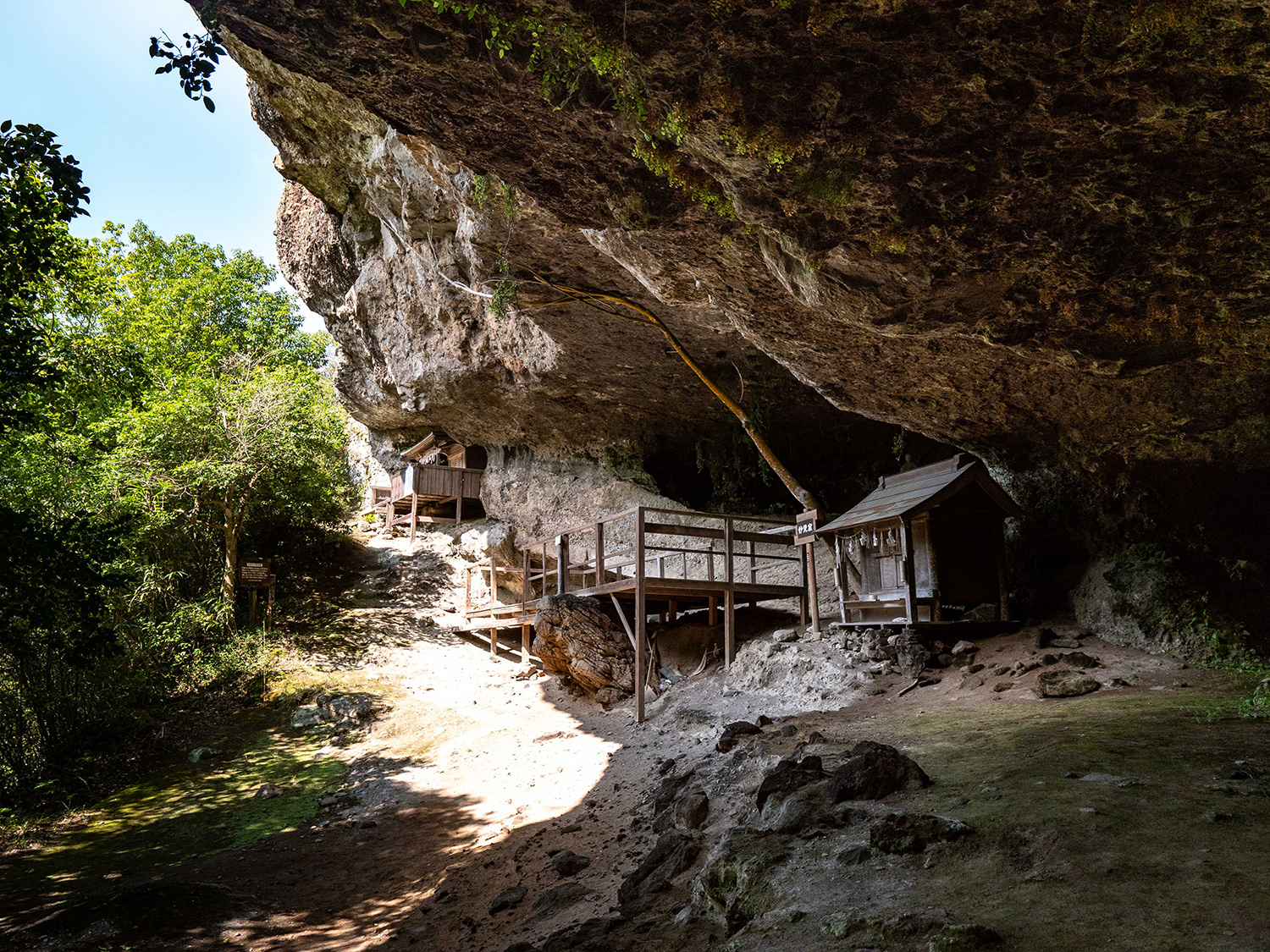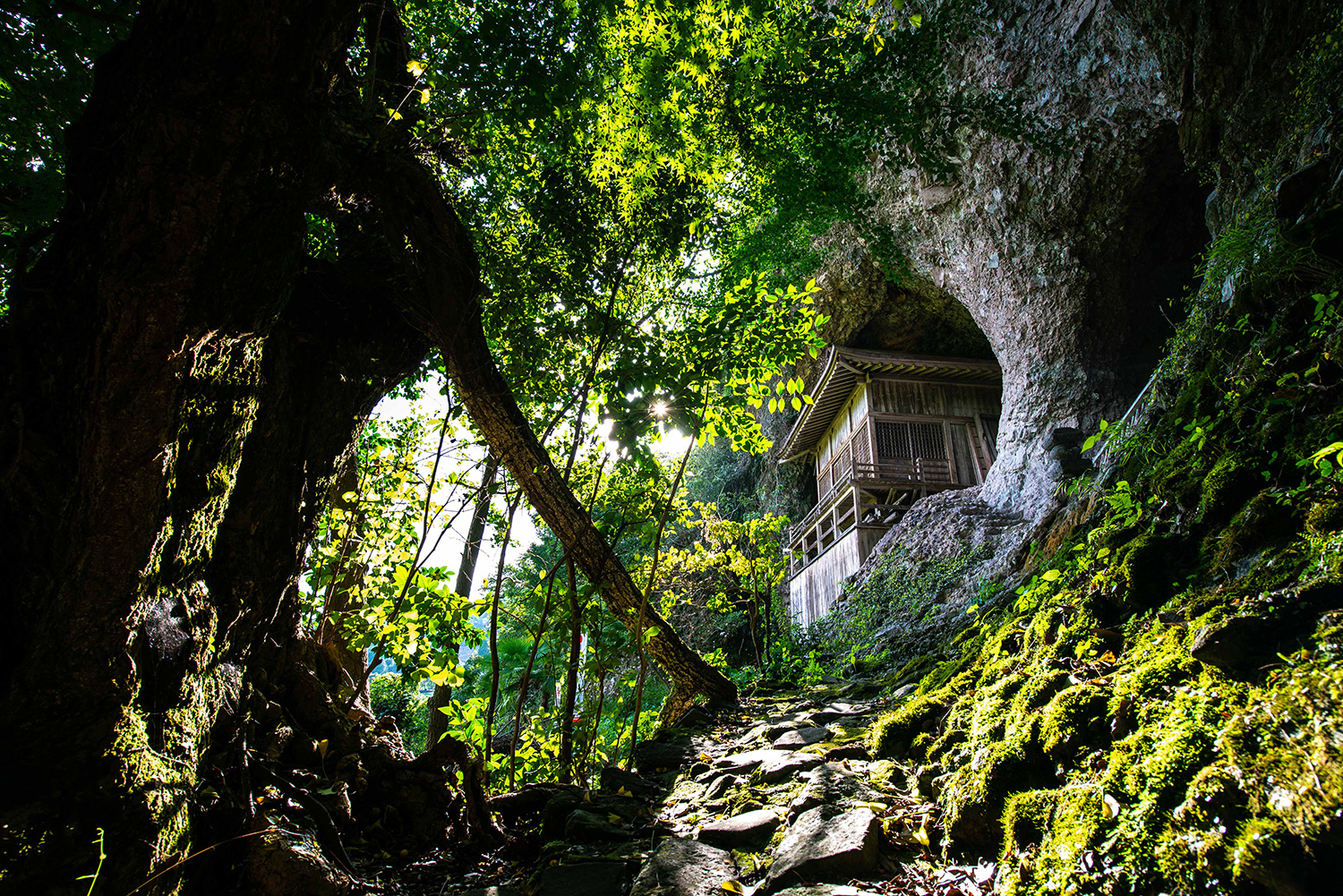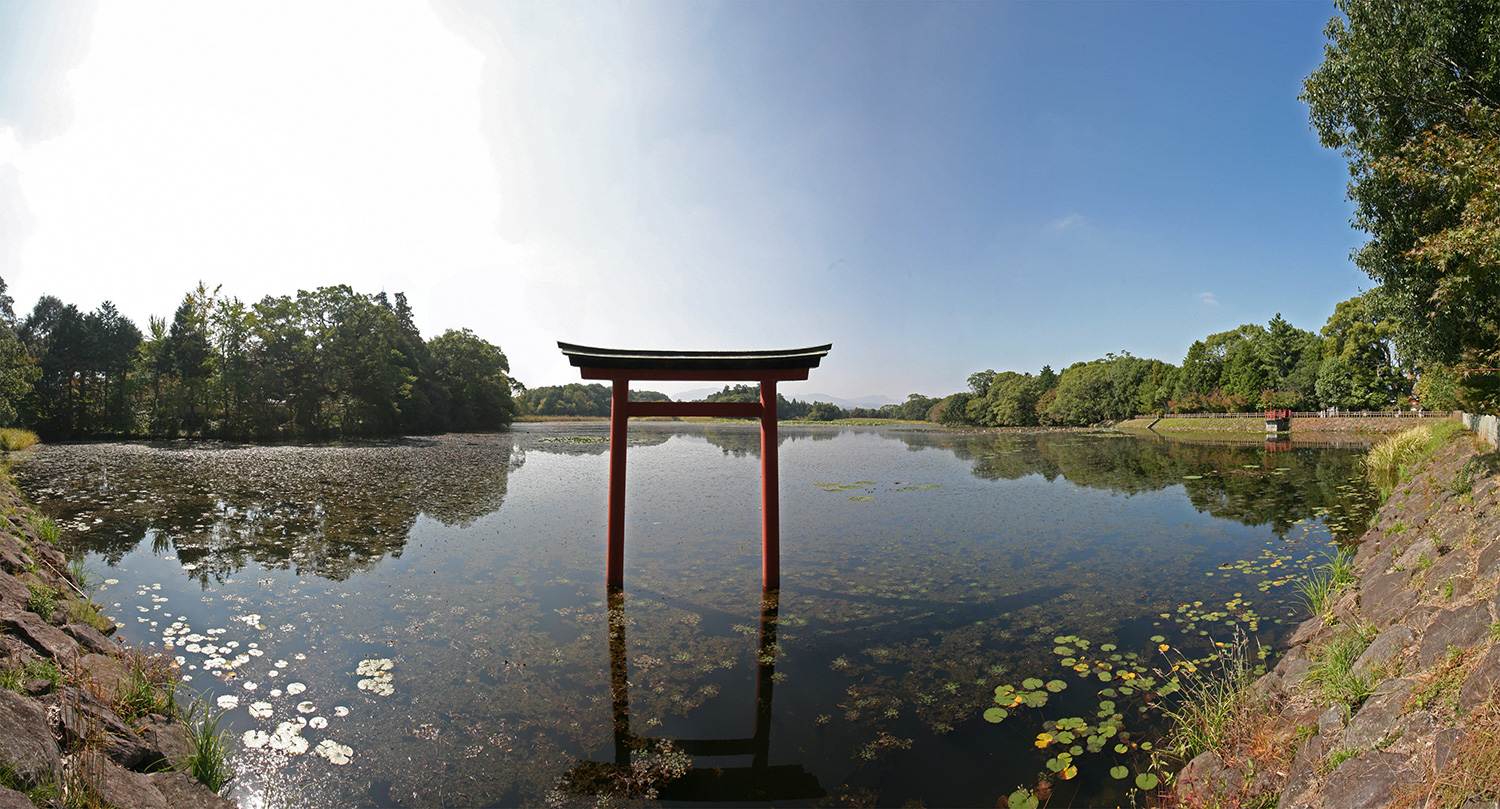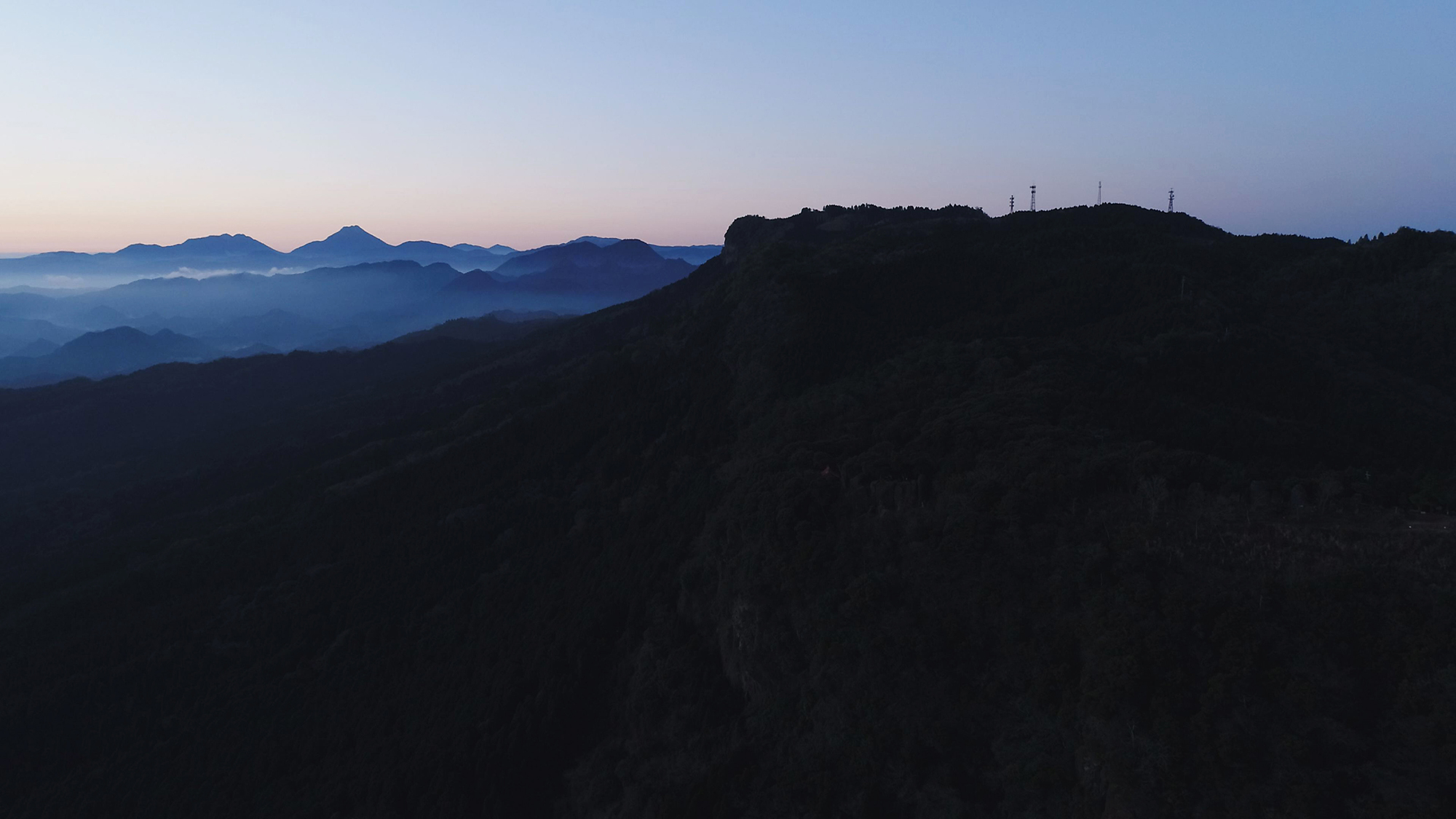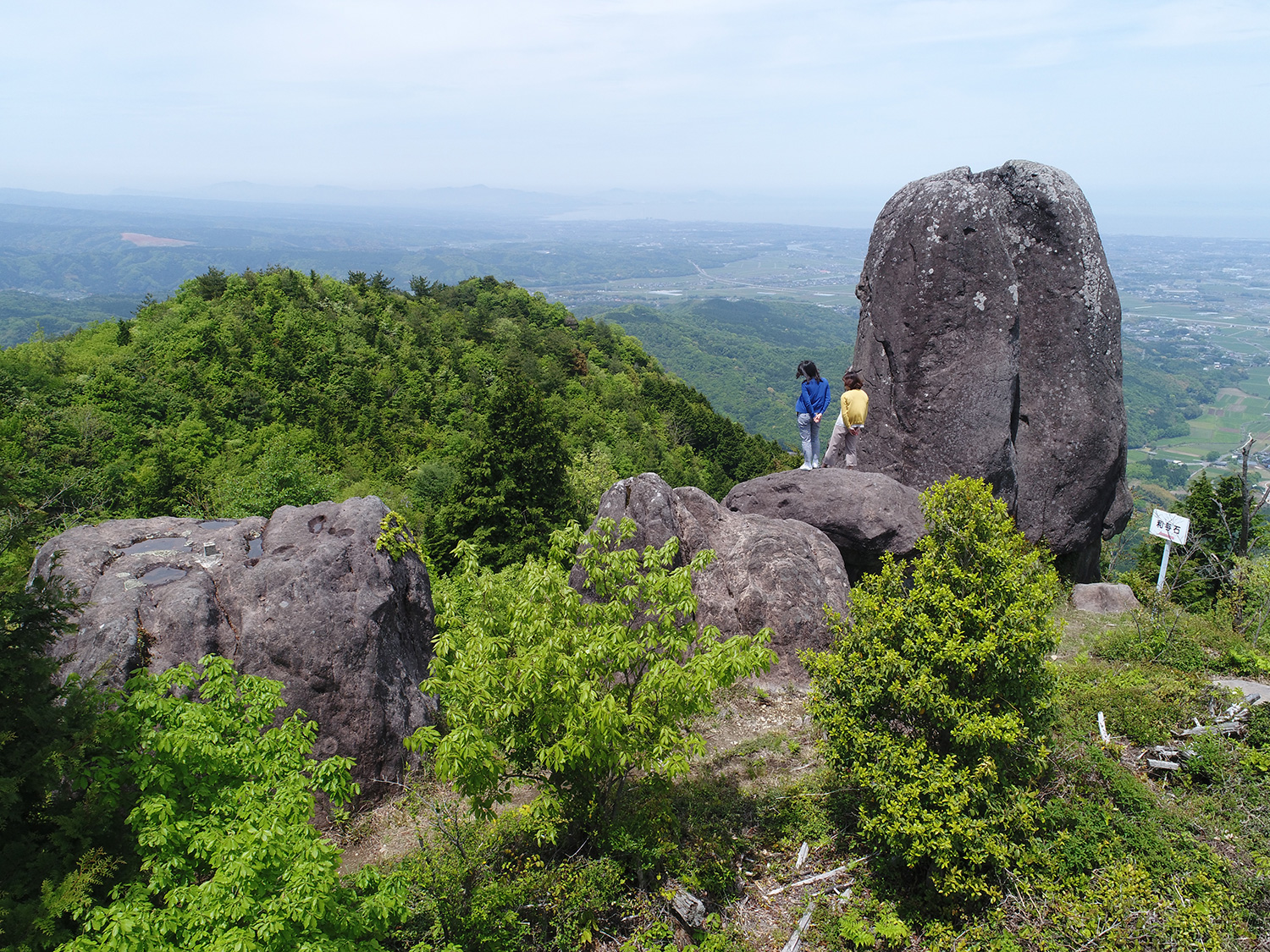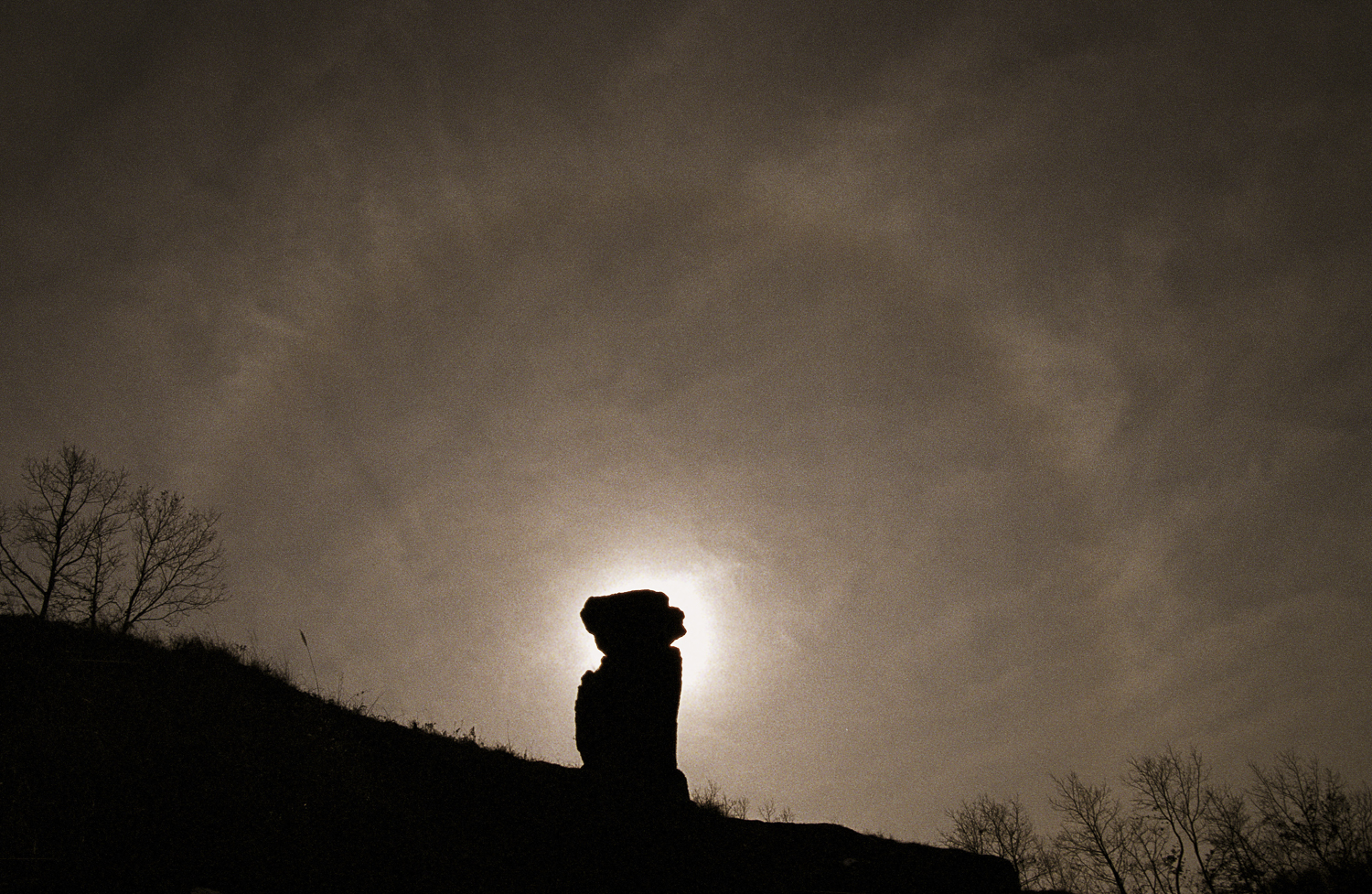
不動明王にみたてたー不動岩ー
耶馬渓を訪れると目にする沢山の巨石、岩峰。千数百年前の昔から、耶馬渓を訪れる人々は、大地に生み出された造形に、揺るぎない意志を感じ、恐れ敬い、そこに神や仏の姿を重ねました。不動明王の形をした不動岩、神が現れるような天の岩戸。耶馬渓の岩山は霊気に満ちています。
競秀峰の探勝道に点在するお堂ー妙見窟ー
丸い岩窟が並ぶー久福寺ー
ぽっかりと口を開けた岩窟は、かつて行者(※1)の修行場でした。聖なる樹木から彫り出された神仏は堂舎に安置され、麓に暮らす人々を千年もの間見守ってきました。峰をわたり、霊場をめぐる行者が開いた祈りの道は、今も人々を幽玄の世界に誘います。
薦神社のご神体ー三角池ー
八面山
神仏習合(※2)の神「宇佐八幡神」の祖宮である薦(こも)神社。鳥居が立つ神聖な池から望む「八面山」の箭山(ややま)神社は薦神社の奥宮でもあります。だから霊山「八面山」には八幡神にまつわる伝説を持つ巨石が点在しています。
八幡伝説の巨石群ー和与石ー
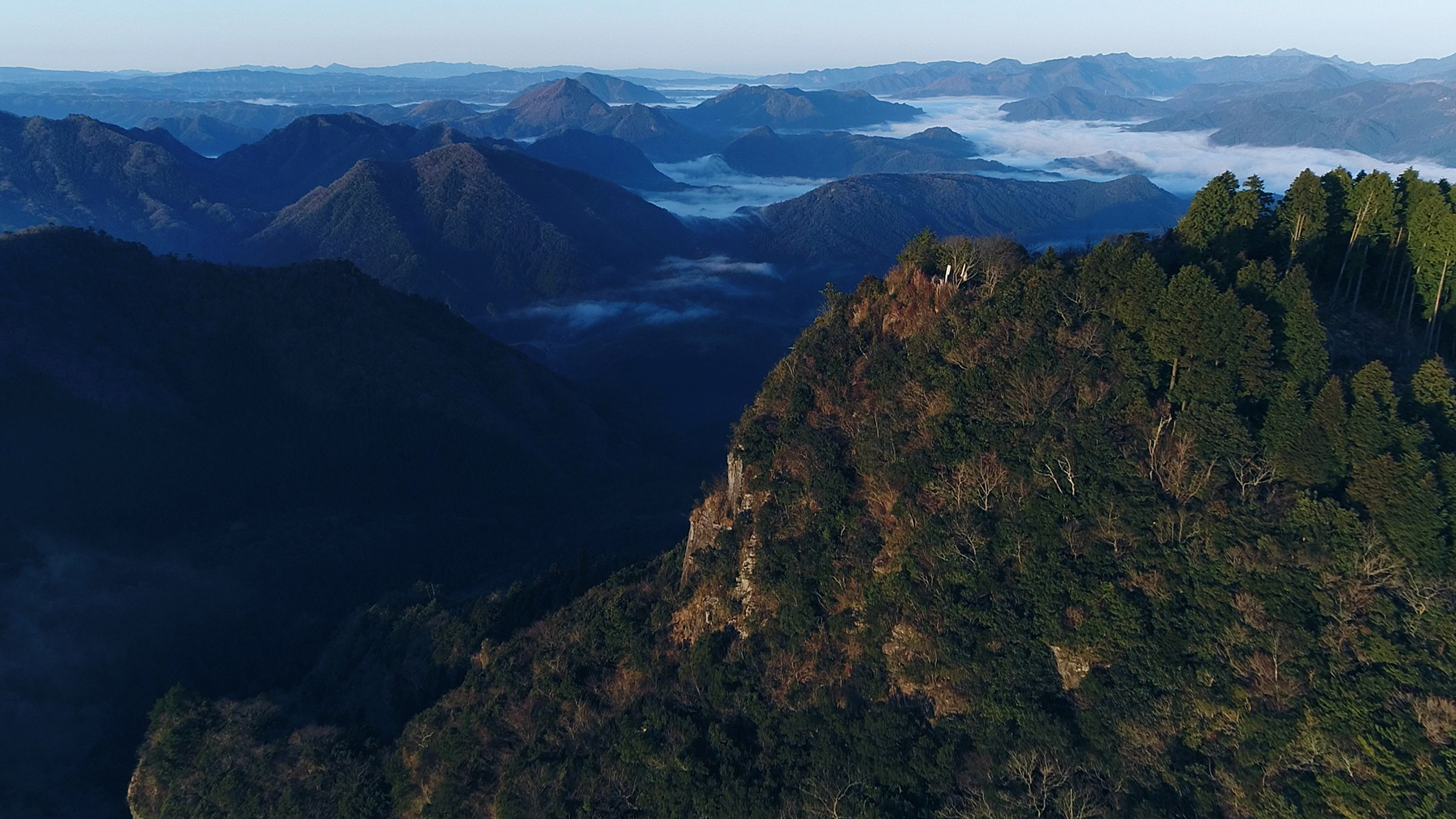
八面山から望む耶馬渓の山々
1000年以上昔、行者「法蓮」は英彦山で手にした如意宝珠(※3)を八幡神(※4)に奪われました。逃げる八幡神を法蓮が追いかけ、八面山の上で追いつきました。八幡神は如意宝珠の代わりに大寺院を法蓮に与える約束をし、そびえ立つ岩の上で二人は和与(和解)します。二つの巨石があわさった形をした「和与石」、八幡神が化けたと言われる「金色の鷹石」・・・耶馬渓の山々に鎮座する巨石や岩峰を眺めると、神や仏を感じずにはいられません。
※1:行者(ぎょうじゃ)=仏教や修験道の修行をする人 ※2:神仏習合(しんぶつしゅうごう)=日本古来の神様を信仰する神道と、外国からやってきた仏教がひとつになった宗教の考え方
※3:如意宝珠(にょいほうじゅ)=全ての物事を思い通りに叶えてくれるという仏教に伝わる宝の珠 ※4:八幡神(はちまんしん)=日本で信仰される神様の一人。大分県宇佐市の宇佐神宮が総本社。弓矢の神として武人からの信仰も集めた
Next inspiration
Other content
See Gods and Buddhas in the Rock

With a Resemblance to Acala – Fudouiwa –
Visitors to Yabakei see many megaliths and rocky peaks. For one thousand and several hundred years, visitors to Yabakei have felt an unwavering force of will from the shapes created by the earth there and, with fear and reverence, found the forms of gods and buddhas in those shapes. Fudouiwa, which takes the shape of Acala, Ama-no-Iwato, in which gods seem to appear—the rocky mountains of Yabakei are filled with a spiritual aura.
Temples Scattered Along Kyoshuho’s Sightseeing Trail – Myoken Cavern –
Round Caverns Lined up in a Row – Kyufukuji Temple –
These stone caverns with wide gaping entrances were once places of ascetic training for gyoja (*1). Gods and buddhas carved from sacred trees are enshrined in the temple buildings and have been watching over the people living at the foot of the mountains for a thousand years. The path of prayer established by gyoja who crossed over the peaks to make their rounds on sacred ground invite visitors into a mystical world even now.
The Object of Worship at Komo Jinja Shrine – Misumi-ike Pond –
Mt. Hachimen
Komo Jinja Shrine is the ancestral shrine of the Shinbutsu-Shugo (*2) deity Usa Hachiman. Yayama Jinja Shrine of Mt. Hachimen, which can be seen from the sacred lake where the torii gate stands, is also the rear shrine of Komo Jinja Shrine. Because of this, megaliths with legends surrounding the the deity Hachiman can be found scattered along the sacred mountain Mt. Hachimen.
Group of Megaliths From the Hachiman Legend – Wayo-ishi (Wayo Rock) –

The Mountains of Yabakei Seen From Mt. Hachimen
Over 1,000 years ago, the Nyoihoju (*3) obtained by the gyoja Horen at Mt. Hiko was stolen by Hachiman (*4). Horen chased Hachiman as he ran away and caught up with him atop Mt. Hachimen. Hachiman promised to grant a large temple to Horen in exchange for the Nyoihoju, and the two of them came to a wayo (amicable settlement) atop the towering boulder. Wayo-Ishi, which is in the shape of two megaliths united together, the “Kiniro-no-Takaishi” into which Hachiman is said to have transformed—one can’t help but feel the presence of gods and buddhas when gazing upon the megaliths and stone peaks enshrined in Yabakei.
*1: Gyoja – People who engage in Buddhist or Shugen-do ascetic practices
*2: Shinbutsu-Shugo – A religious way of thinking which combines Shinto, the ancient Japanese religious faith in kami (gods), and Buddhism, which came from foreign lands, into one single religion.
*3: Nyoihoju – A treasured jewel in Buddhism said to fulfill all of the wishes of the one who owns it just as they see fit
*4: Hachiman – One of the kami worshiped in Japan. His main shrine is Usa Jingu located in Usa City, Oita Prefecture. He also garnered worship from soldiers as the god of bows and arrows.
Next inspiration
> episode 1 Listen Intently to the Pulse of the Land
> episode 3 Creating the Sacred Place of the Rakan
> episode 4 Cutting Out the Scenery
Other content

